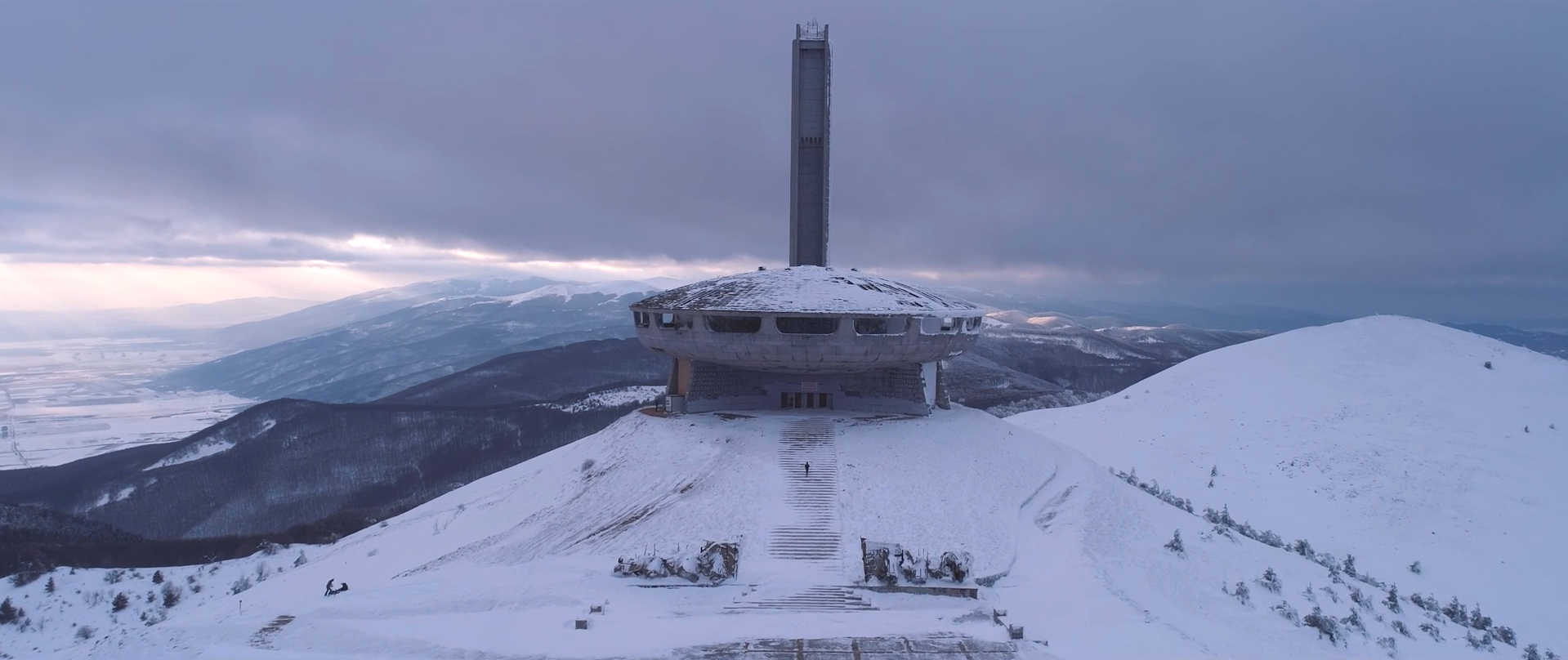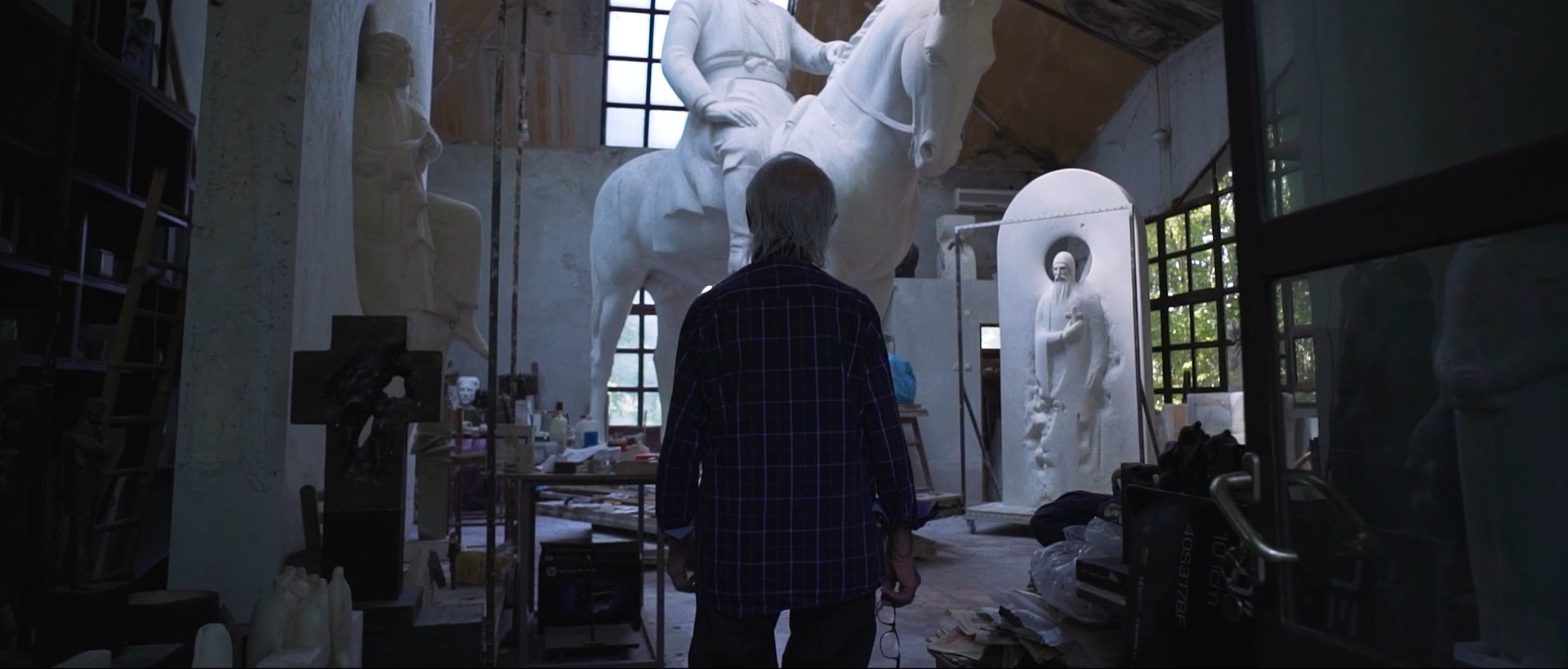
STALKRFILM collaborator Joshua Cowan marks a spectacular return to narrative form with the short documentary, “MONUMENTUM”.
Joshua (self-shooting and with no crew) filmed in the harsh winter conditions of Bulgaria, Serbia, Bosnia and Croatia to document the loss of socialist and communist era monuments as they are abandoned to ruin.
The depth of narrative is bolstered by key interviews, including with Miodrag Živković, noted Serbian sculptor and university professor who designed countless memorials including the iconic “Broken Wings” in Serbia.
This result is an extraordinarily haunting, engaging and cinematic tribute to a unique era of architecture that is in danger of being lost to history.
STALKR spoke with Joshua about the creation of Monumentum, the life of a self-shooter and his passion for travel.
S: It’s an unusual subject matter, what initially drew you towards it?
J: I found it strange that these impressive sculptures and buildings could be left in such a state of disrepair. Why would no one want to maintain these monuments, even though there is clearly a public interest in them?
S: How long did it take to research and make the film?
J: The initial research took me a few months. It was mostly visual research and finding locations then mapping them out on Google Maps, etc.
On my first trip I shot all the monument footage. However, when I reviewed the shots I realised there was a need for a more distinct narrative, so I continued to research the monument creators, the sculptors and architects, and found there were only two still alive, Miodrag and Georgi, both in their 90’s.
It was very difficult to get the contact details of Miodrag. When I eventually found his number I called to discover he didn’t speak English – instead he shouted at me in Serbian!
Luckily I managed to find a girl named Nikolina who was in touch with him. She arranged a meeting and we took it from there.
S: What were the key challenges in making Monumentum?
J: The most difficult thing for me was trying to tell the story from the creator’s perspective without being biased towards a certain ideology.
Both Miodrag and Georgi are very nostalgic for this period, having both achieved great artistic and personal success under socialist regimes. For me, this highlighted an interesting aspect of the period; that it empowered and encouraged artists. It’s controversial, but I found this central tenet very interesting.
S: The film has very cinematic look and tone, how did you achieve that?
J: It was the visual aesthetic of the sculptures and monuments that drew me to this project initially. I decided that shooting in winter would emphasise the abandoned aspect of both the architectural aesthetic and the seemingly forgotten political period.
For the interviews, I tried to make them as personal as possible by shooting handheld. This made editing the dialogue together difficult, but the intimacy this style of camerawork provided outweighed any post-production challenges.
S: Was there a difference between your expectations going in to the project and the final edit?
J: My initial idea was to only use drone footage. After visiting and learning more about the subject matter I felt a purely visual film wouldn’t do the subject matter justice. it needed a human presence.
Also, both artists were very old and I knew I’d likely be the last person to interview them, so I felt compelled to finish it.
The final film is more reflective and has a longer run time than I initially envisaged, but I’m proud of the end result.
S: As a self-shooter you wear many hats; producer, director, cinematographer etc. What, in your opinion, are the positives and negatives of this level of autonomy?
J: I’m a pretty introverted person and enjoy traveling alone so it’s mostly positives for me (haha).
I love being able to travel freely without prior plans or syncing with someone else’s calendar. I can spend an extra day somewhere if needed, or skip somewhere and move on if needs be. I generally book my hotels day by day, which would be much harder to do with a crew.
Also, these days you can fit a decent camera, a few good lenses and a drone in a single backpack, so I have all the kit I need, and can be very flexible and reactive. This was just not possible until recent advancement in cameras.
The negatives are that I don’t have people who are specifically skilled in certain areas. For example, having a dedicated DOP would mean I could prep quicker and more efficiently in certain scenarios.

S: When you’re on difficult locations and shooting in adverse conditions, what keeps you motivated?
J: Knowing it’s all contributing towards something makes it worthwhile. Every evening I go through my rushes and it brings me a lot of enjoyment.
S: What brought you to filmmaking?
J: I’ve been interested in travel since I was young. As soon as I turned 18, I traveled around the world for 15 months, and I knew I wanted to somehow turn this into a job. After I came back from traveling I got into Vimeo as there was a surge of filmmakers making travel videos on the Canon 7D and 5D.
I decided to buy one and start making my own films. I would make a short film of each trip I went on and post it to Vimeo. Clients then started to reach out and ask me to create videos for them.
S: How do you think the industry and the need for stock footage is changing?
J: The footage quality of handheld cameras and drones is now similar to the high definition that cinema cameras could shoot a few years back. This leap in available camera technology has naturally led to clients having a lot more footage to choose from than they did say 5 years ago, so I constantly try to progress and up my game as a filmmaker.
S: What are your hopes for 2022?
J: I’d like to be in the mountains more this year. Hopefully some great drone footage will come with it.

 Los Angeles
Los Angeles